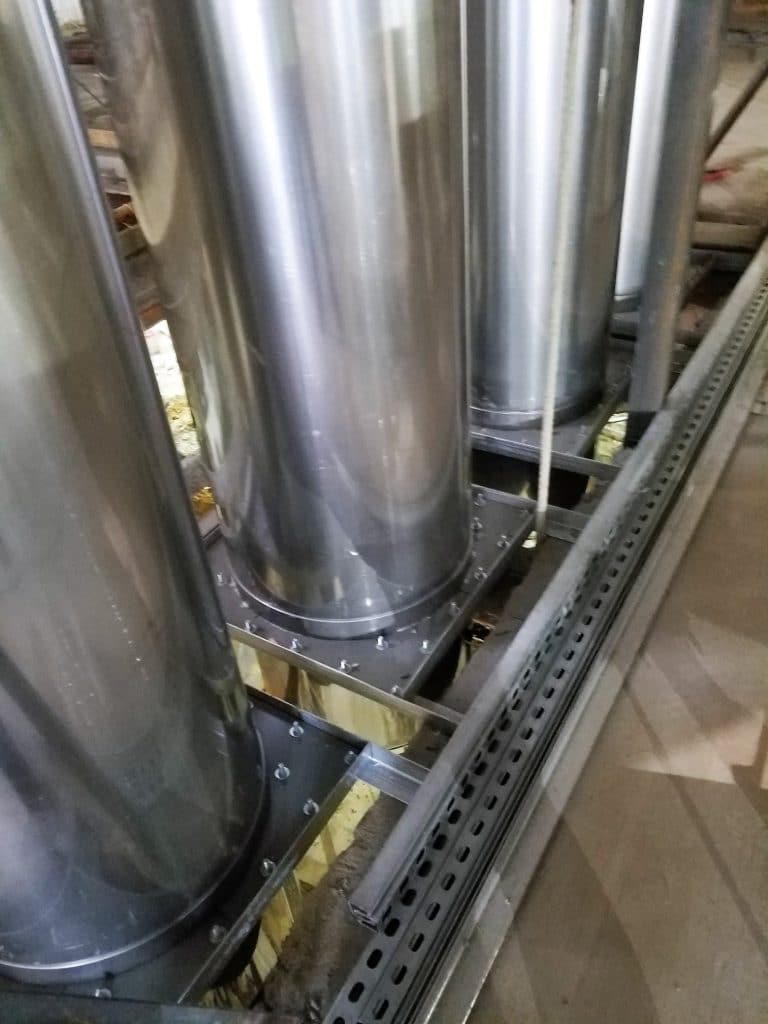Cleaning your commercial kitchen exhaust system can be a laborious and complicated process, but one that is necessary to ensure the safety and maintenance of your cooking facility. Ensuring your commercial kitchen appliances have clean grease ducts not only satisfies NFPA96 compliance (Standard for Ventilation Control and Fire Protection) but is also recommended to help prevent fires.
According to The National Fire Protection Agency, your kitchen exhaust system should be professionally cleaned anywhere between once a month to once a year depending on the volume of food cooked, the type of fuel used, and the type of food cooked. Systems serving solid fuel cooking operations and systems serving low-volume cooking operations should be cleaned once a year. Systems serving high-volume cooking operations should be cleaned quarterly, and systems serving moderate-volume cooking operations should be cleaned twice a year. Expect that a full kitchen exhaust system cleaning will take around 3 to 4 hours.
It is highly recommended that a licensed, experienced professional complete this process using their specialized equipment to ensure the deepest, most thorough clean possible. Scheduling these routine appointments also helps to prevent forgetting or putting off cleanings due to busy schedules. Below we outline the process for how to properly clean grease from your commercial kitchen below, whether you venture to complete this task yourself or seek the help of a professional.
Kitchen Hoods
The first step to properly cleaning a hood is to tape the electrical outlets and cover all cooking surfaces with sheet plastic. This will protect the surfaces of the hood from grease and chemical spraying during cleaning service. Next, remove the hood filters and clean them separately. From there, put a large piece of sheet plastic across the hood so that the grease water runs outward into a large trash can. After, apply a chemical degreaser to the hood and allow it to soak for a few minutes, followed by pressure washing the grease and chemicals off the surface of the hood. Depending on how much grease has been built up on the hood, repeat this process several times. Once the hood is completely clean and the plastic is removed, clean any spots that may have been missed by the pressure washing using a towel and chemical degreasing formula. Finally, polish the hood with a stainless-steel polish.
Duct Work
There are several options for cleaning duct work. The first is by using a magnetic scraper, which is the safest method for when ducts have holes and leaks. This is also the most effective way to remove thick grease but know that it is very labor intensive. Another option is through power washing, which is much faster than magnetic scraping and is usually more cost effective. Finally, you can use a spinner jet, which is the most beneficial when you are trying to clean long, vertical stretches of duct work.
Exhaust Fans
The first step is to remove the blades from the exhaust fan so you can properly clean it. This includes twisting the fan and motor assembly to remove it from the exhaust vent. Using a damp cloth and soap and water, wipe the fan blades and motor until they are completely clean. To get rid of hard-to-remove dust, you can use a vacuum attachment to get that cleaned.
While dedicating the time and energy to routinely clean commercial kitchen grease ducts seems a daunting task, its value cannot be understated. Our UEP specialists are here to help check this task off of your maintenance to-do list. Contact a UEP specialist today to learn more!




